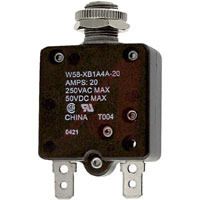iceworm
Curmudgeon still using printed IEEE Color Books
- Location
- North of the 65 parallel
- Occupation
- EE (Field - as little design as possible)
I did not know that. I have not ever paid attention to the CBs found is package, residential grade generation. Be that as it may, all molded case CBs that I have seen have an inherent instantaneous trip - i've never seen a 'thermal-only'. If you are telling me that hardware store gensets have special CBs, I'll believe you - surprised, but okay.That breaker on the $500-1000 hardware store genset is not a QO breaker or a Siemens Q series breaker, or any other common thermal magnetic breaker found in a panelboard. It is likely a thermal only type of breaker from most of what I have seen, ....
I've had occasion to read through UL 1004-4 and UL 2200. Still, I'm not qualified to comment on small, cheapest possible, hardware store grade, package gen, cost effective design.... it is protecting the genset for the most part and needs to react to heating similar to how a motor overload protector reacts to heating caused by motor current. The impedance of this genset is high enough the short circuit current will not be high enough to get into the instantaneous trip ranges of typical thermal magnetic breakers and they trip on thermal overload anyway. They may or may not select a breaker that has a trip curve that well protects the genset, but I'm guessing most just choose something cheap and it is good enough to get by with. ..
Considering what I think I know, for first part (cb protects the gen), I don't know that is true.
The second part, sure - good guess
... I do have a 8000 watt unit that I do use for work when there is no power on site. I even use it for welding somtimes, but the breaker on this unit does trip if I weld at too high of setting/too long of duration. I can run same welder via same cordset that is rigged to fit the generator on a 30 amp QO breaker in my shop (from utility supply) and usually weld at higher setting/ longer duration then I can when running on this generator. But that don't mean all similar sized units will handle it same way either.
Your 8KW has a 240V, 30A, 4W receptacle, protected by ta 30A CB? And has two duplex, 120V receptacles, each protected by a 20A CB? The welder is plugged into the 1ph, 240V, 30A 4W receptacle, protected by a 30A cb, and the CB trips if you pull hard on it? (guessing this cause that is what i had on a Miller Bobcat 225A, with an 8KW aux gen.) If so, sounds good to me. An 8KW is good for 32A +. The 30A cb is for the receptacle, not the gen. Just guesses.
ice


